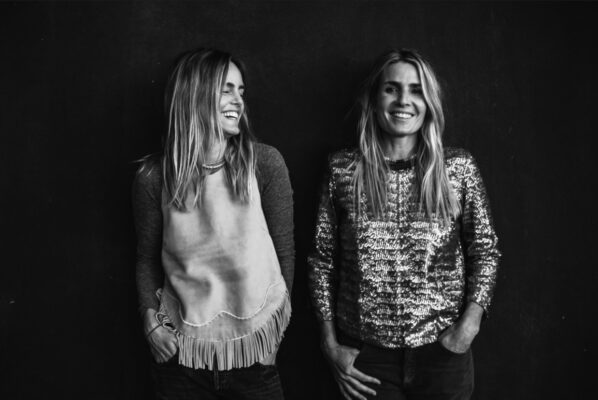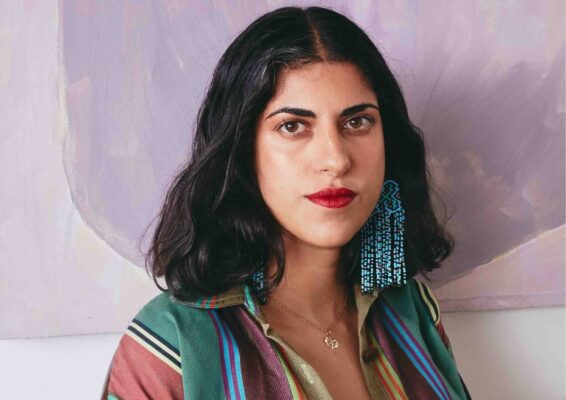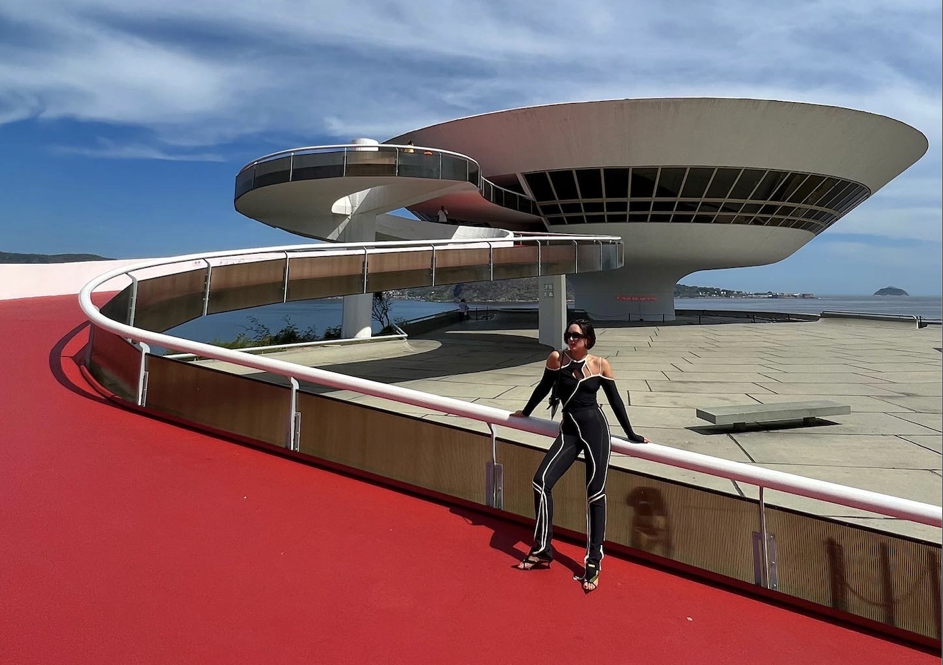
COFFEE WITH
SIMONETT PEREIRA: “IT WAS MY EXPERIENTIAL STRATEGY THAT MARKED THE DIFFERENCE”
Name: Simonett Pereira
Profession: Creative Director
Nationality: Venezuelan
Zodiac sign: Taurus
Instagram: @_simonett
LATINNESS: Simonett, you have a unique perspective and sensibility in fashion, which makes us wonder what your upbringing was like.
SIMONETT: I always used fashion, design and art as a series of fantasy worlds through which I could escape from my everyday life since very, very little. I grew up in Caracas, Venezuela, until I was five years old. My parents divorced, and I came with my mom and sister to Miami, where I went to high school and college.
However, I was also super attached to my Venezuelan culture because my dad was there. During the summers and winters they sent us to Venezuela. I saw both perspectives: in my native country, everything was more traditional. My dad lived close to his parents.
On the other side, there was my mom, who I looked up to as a young, single woman trying to establish her career. She’s always been a sales person by blood, that’s why we call her “La Turca”. She was good with business, sales and entrepreneurship. She was the one who showed me what is possible in terms of environment, business and entrepreneurship.
Meanwhile, my dad was always much more creative. He is an artist. In Venezuela he dedicated himself to making dummies, props designs and scenery in advertising. I grew up seeing that, and he would get us involved. Together we made toys, letters with photos of us… I had a super creative perspective with him, and I saw that you can create a business out of creativity.
My mom was much more business-oriented, and my dad was super creative, but they both had their own businesses. That was my background. That’s how I was exposed to art and everything related to fashion.
I particularly liked the latter more because it seemed like a fantasy world to me, being able to express oneself through clothing in an incredible way that I didn’t see in my day-to-day life, neither in Miami in the 1990s nor in Venezuela because it was more like a small town. The two cultures weren’t as exposed to this couture and the things I saw on the internet.
I loved making collages and journals from my grandfather’s planners. I escaped into my fantasy worlds, and that’s how I started, literally, when I was five years old.
LATINNESS: The internet changed everything for us. I read so many blogs.
SIMONETT: I grew up with that. Since I was very young, I was inspired by my grandfather’s albums, seeing photos of his journeys through South America. He had an entire library full of them because he was an insurance salesman and traveled a lot. He took the family and would dress them spectacularly; pure fashion of the seventies. It was so wow… They all matched. For me it was like a movie.
Growing up, I started looking at shows and would go to Vogue.com frequently to check out the new collections. I printed them to create lookbooks, and my mom would scold me because she spent a lot of money on printer ink. I’d put together collages and said: “I’m going to learn the aesthetics of all these designers”. So, I looked at the pictures, covered the name and tried to guess without seeing. “Ok, I know it’s Alexander McQueen.” That’s how I started.
LATINNESS: What would they say in your house?
SIMONETT: My mom wondered, “What is this little girl doing? Why don’t you go out and play with your friends? What’s happening?”
I was the one who undertook the first fashion show at my school, and in 2008 or 2009, I started a blog with a friend of mine, called The Goodwill Project. This was before the thrifting and second-hand boom.
The idea came about because we’d gone to Goodwill one day and found an Oscar de la Renta dress for 8 dollars… Crazy stuff. So we said: “Let’s do a blog for a year”. The idea was to create a daily look for 365 days with Goodwill garments. I took her picture, she took mine, and we uploaded them to the blog.
It was my first project in the fashion world, and it was basically about styling. We found it interesting because it was a way of looking for something super inspiring in an everyday environment.
Six months after launching the blog, an application called Poshmark came out. To promote it, the creators began to do tours through different cities or Posh Parties. They hired a host in each city, someone who was connected to the fashion scene in that place so that people could engage with the app in real life. Social media was just starting in those days, it wasn’t that strong.
They saw the blog and hired me to host the Miami party. I became very good friends with the app owner and the marketing team. They took me to Las Vegas to give a lecture.
When they put me on Poshmark, I started selling the stuff I had bought at Goodwill. I sold super well, so they used me as a case study.
At that time I was working as a junior events coordinator for a hotel group in Miami earning very little, but by selling things from my own closet and from Goodwill on the app, I started to do really well. So much so that they were like, “Wow, you can literally be 18 years old and make more money from home than working in a junior position anywhere.”
LATINNESS: Very millennial!
SIMONETT: Exactly. It’s a similar story to Sophia Amoruso, who had her stuff on eBay, but in my case it was an app. I couldn’t believe it. People bought a pair of shorts from me that I had bought for 30 dollars, but I always had a marketing approach, taking the photos in a certain way so that they were perceived differently. That’s my forte.
LATINNESS: Do you have any training in photography?
SIMONETT: I studied fashion design at MIU in Miami, but I dropped out. I realized that I’m more of a curator, meaning I’m much more into taking photos, curating pieces, and creating a universe. I consider myself more of a creative director than a designer, because what I like is bringing the story to life, the visual part, the feeling behind what’s going to be told.
However, in practice it was trial and error. I learned to use Photoshop, thanks to everything I printed from the collections, from the magazines I made, but it was self-taught. Kind of like YouTube University, literally. I was the type of girl who loved to search on my own.
The photos were taken with my phone. I would grab a mirror in my house, set it up and start the session.
Now, I’ll continue with my story.
I did great at Poshmark. After a while, I was added as a suggested user, which meant that everyone who downloaded the app automatically followed my account. So when Poshmark started to grow, I already had investment, funding, everything. I remember amassing over a million followers on the app. It was a business at that point. By then, it wasn’t about the Goodwill stuff anymore. I would go to shows or to Los Angeles to shop. I wasn’t designing anything yet, but I was buying pieces in bulk and selling them on the app. That’s where the business of having a store began.
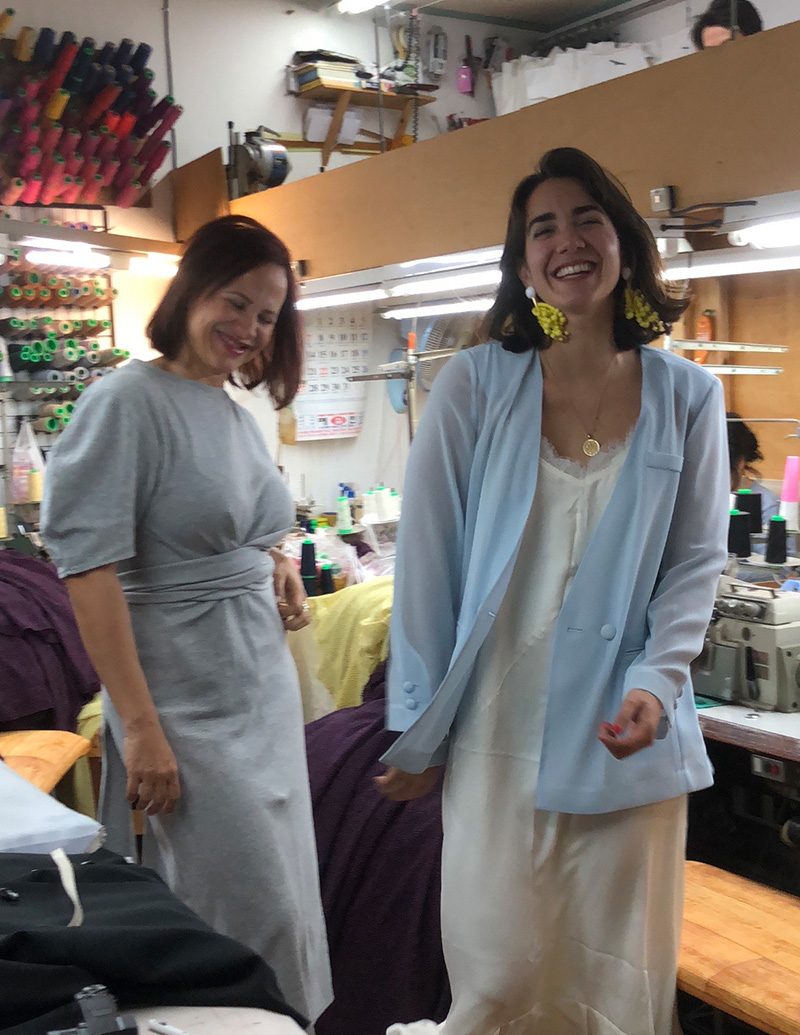
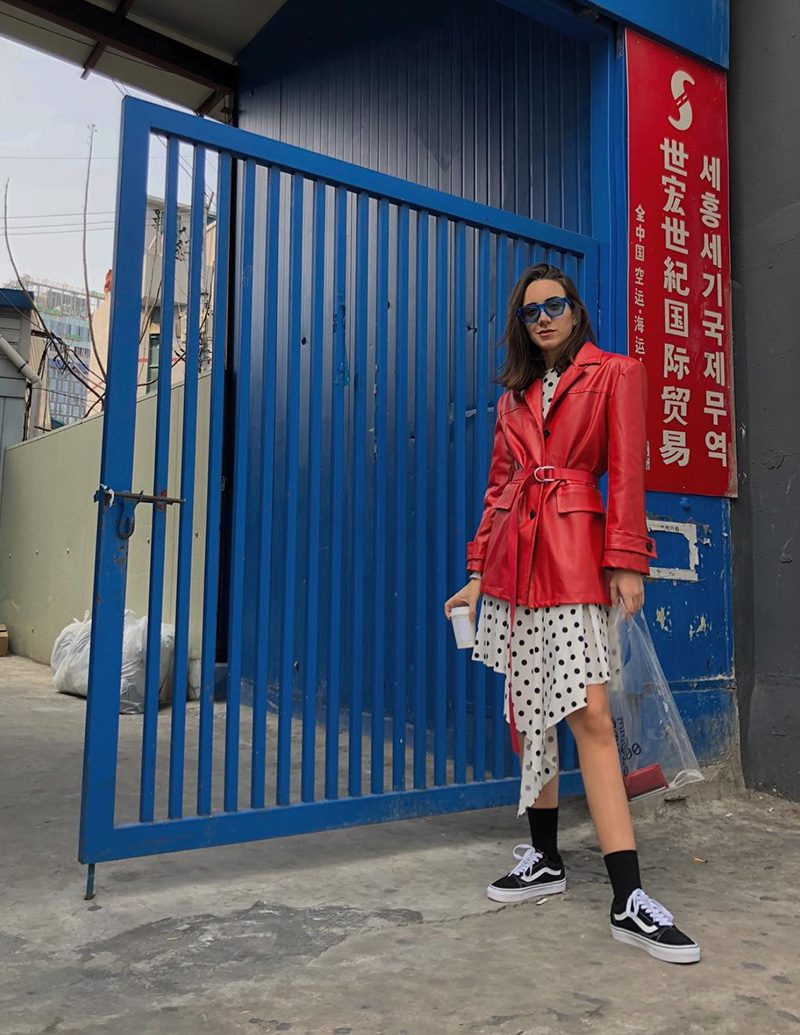
LATINNESS: So this was the beginning of Style Mafia?
SIMONETT: It was before Style Mafia because I started with things that weren’t my brand– I bought and sold them.
That’s where my mom comes into the equation. Since she has an entrepreneurial vision and smells business, she saw that this little 20-year-old was making money and started asking questions. “What’s going on here? What are all the packages going out about? What is this?”
I explained, and she said, “Why don’t you start your own brand? I know you aren’t a designer, but you have very good ideas.” She had experience in manufacturing in China because her electronics company produced everything there. She didn’t exactly have the fashion contacts, but she knew where to go, what to ask, and how to get around.
Then she blurted out, “Let’s go to Asia. Design a small collection of 12 pieces. Get ideas about garments that you want and that aren’t on the market, and we can work with a development team there. With a professional designer to do it… The patterns, the flats, all that”.
We produced the collection. That was in 2012. Wynwood was just starting out and the Design District didn’t exist. There was no fashion store. We saw that as an opportunity, because we knew that many Latinos loved fashion, and had to go to New York, Los Angeles or other places to find unique pieces. We concluded: “This is the time to open something in Miami.”

LATINNESS: With Style Mafia you were one of the first brands in Wynwood.
SIMONETT: Yes. Style Mafia was in Wynwood. This district had already gone from being an area of artists and studios, because the boom was like in 2006 and 2007. When I arrived, they weren’t there. Commercialization was starting. They opened Wood Tavern, but not much more, just food and beverage and a lot of interesting people.
That’s when my mom told me: “We’re going to open a store and start a brand.” We went to China and started looking for factories that also managed development. We contacted a designer who had his own brand and also did private labels for other people. We used his studio to develop the first collection. It was the debut of Style Mafia, and we launched in 2013.
It was about 12 more or less basic pieces, but with a different touch. Things that you couldn’t find elsewhere, but that worked within the budget of a person like me– a young woman who likes fashion, but can’t afford the prices of Prada or Chanel.


LATINNESS: Such as creative, edgy students…?
SIMONETT: Exactly. We started with that, and it was successful. We opened the store in Wynwood. It was a hidden gem. You’d arrive, and it would’ve never crossed your mind that we had what we did in that place. That part of the experience was super cool to me because you walked in and everything was from another world, which was what always interested me.
It was exactly that– my experiential strategy– that marked the difference and is still a part of me. We launched the collection in October 2013, and it was nothing more than retail in the store. We weren’t online at that point. We sold the pieces within a couple of months, we received a lot of press and a lot of recognition because we were doing something different.

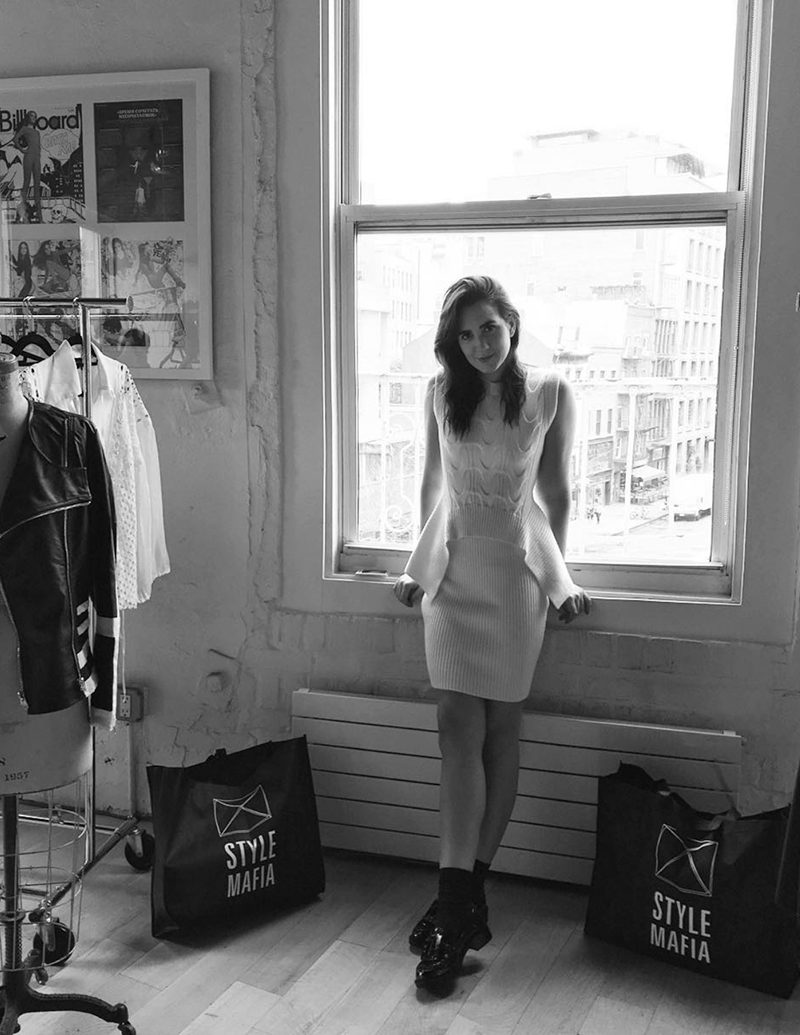
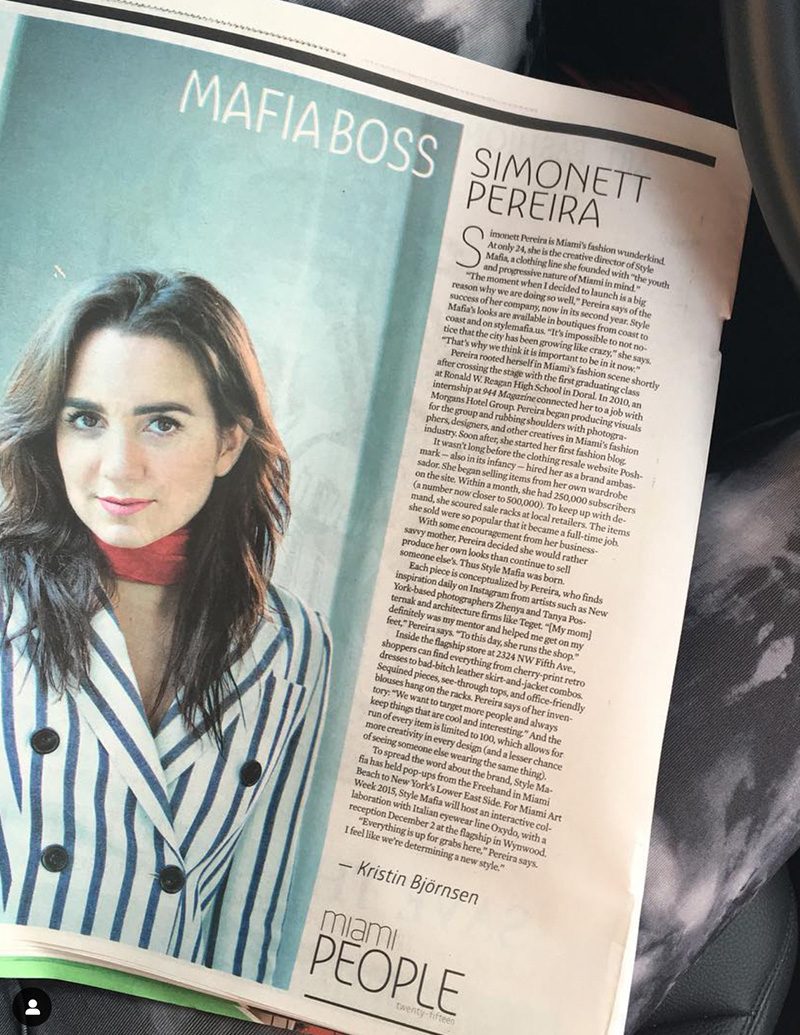
LATINNESS: At what point did you evolve from Style Mafia into Simonett?
SIMONETT: In February 2019. So we started with retail, and then we went to the Axis Show in New York. There we got into wholesale. At that point, we managed to sell at Bloomingdale’s, Free People and Asos.com. Style Mafia became, literally, the Nasty Gal of the time. We start wholesale sales. The business grew from nothing to five global accounts in two or three years. It was super fun, but the growth happened really fast, especially for someone who had no experience, had never worked for another brand and hadn’t been in this business environment.
I felt that I could do whatever I wanted, but I also experienced a shock because we had very large sales and production volumes, and we didn’t have 100% know-how. It was fun, but also quite hard the first few years.
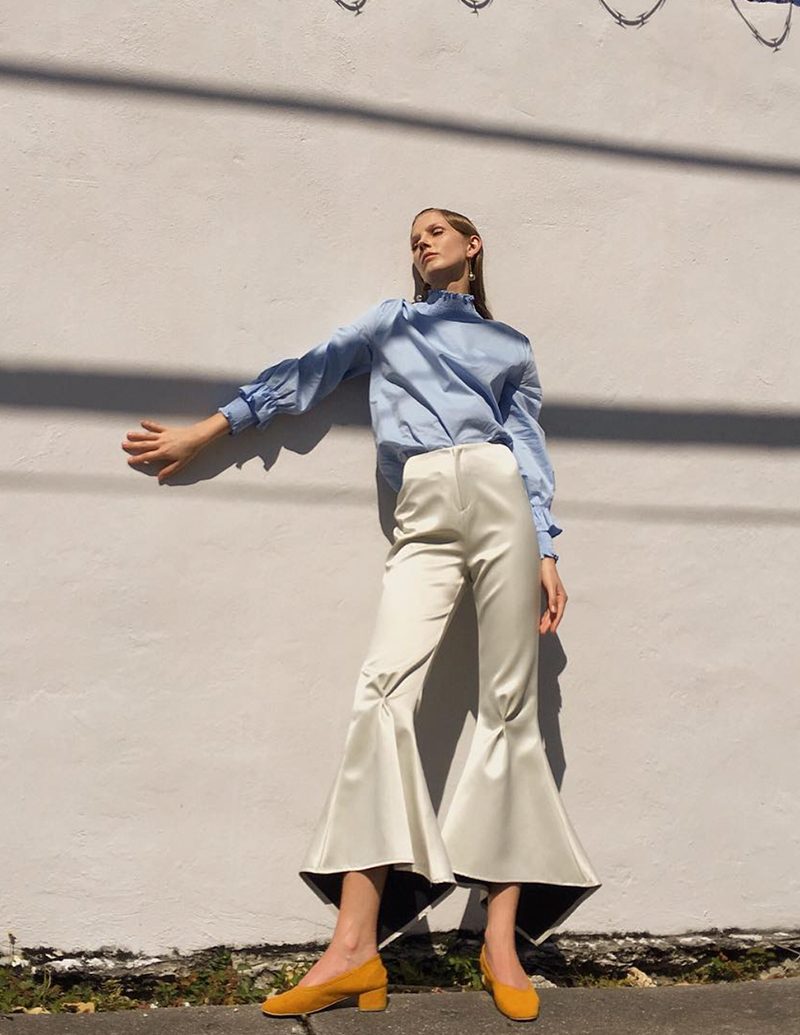

LATINNESS: Did you hire a team?
SIMONETT: Until 2018 we were a tiny tiny tiny team. At the end of that year I started thinking about the name. I had released it when I was 18, and by this point I was 24 or 25. It didn’t resonate with me anymore, I felt like it was something I didn’t identify with. Plus, I felt that the designs and style were becoming fast fashion due to the volume of sales and the frequency of orders.
We had reached a point where we couldn’t handle the level of creativity, nor the calendar to produce new things. Design and quality were affected. We started making watered down versions of high end designers in order to have new pieces, always, always, always. We felt compelled to quickly look somewhere for what we were going to do, so we got into this fast fashion rhythm for a while. I was defeated. I didn’t like what I was doing at all, I felt super depressed
At that point I reflected: “Look. This is not what I want, especially with so many brands in the world; so much pollution. There is no need to create for the sake of creating. Either we say something different and important, or we don’t do anything.” Obviously, we already had a business set up with employees, location, etc. so I couldn’t just say bye, either.
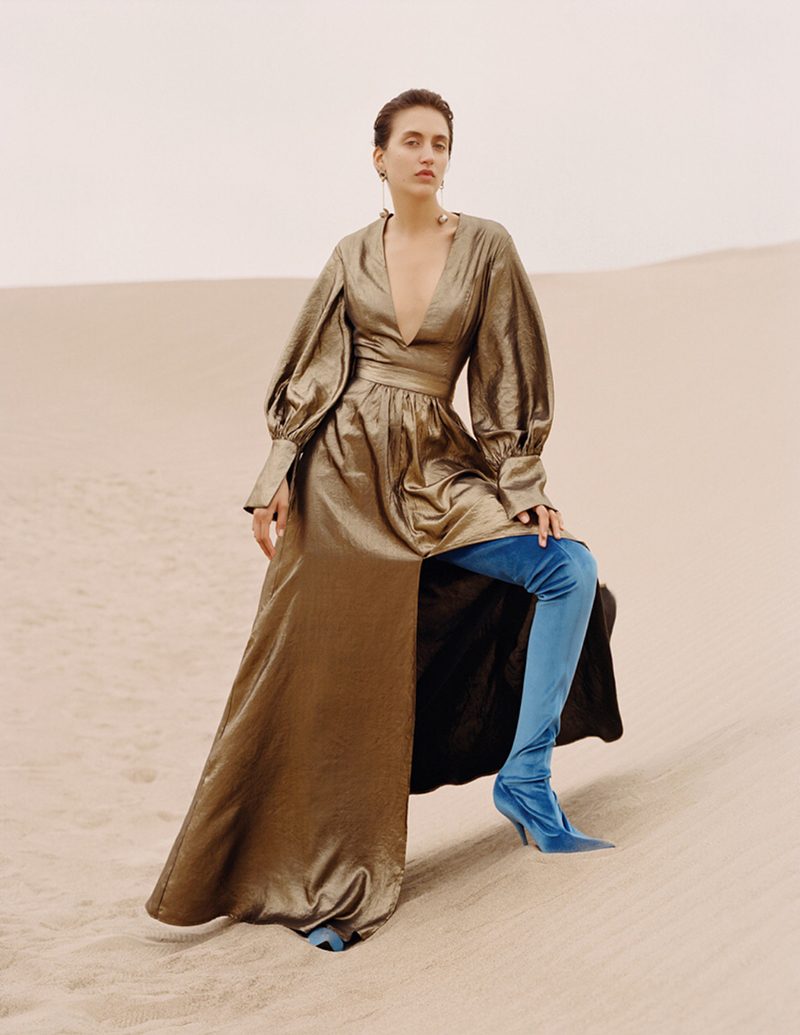
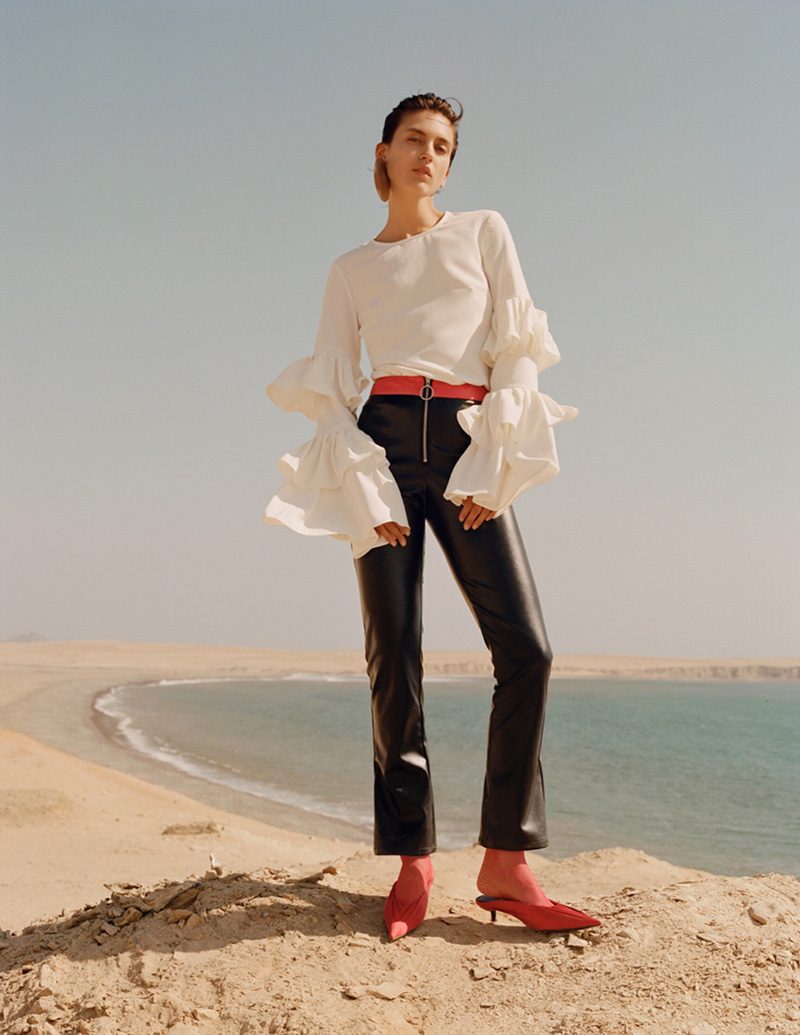
LATINNESS: How did you manage that brand pivot in such a short time?
SIMONETT: We hired a designer from Miami who helped me conceptualize the designs and had spectacular taste. In 2018 under the name Style Mafia, I moved away from doing things that were fast fashion to a more conceptualized idea.
The quality also changed because we worked with finer fabrics, some natural, and we had to raise prices by thirty percent. Of course, there was a shift in price and style. We made the mistake of doing it from one collection to another. We didn’t educate the consumer first on what we were doing.
I found it very difficult to go from being a cheaper brand to a more expensive one. It’s better the other way around. If you have a brand like Marc Jacobs and then it occurs to you to make a more accessible sister line, it’s super easy because you already have the aspiration towards your brand. We were doing the opposite, and we did not do well at all with that collection. It was the last of Style Mafia, and the result was not as expected. Retailers didn’t sell it at the same rate and capacity as the previous ones, which were more “designer inspired”. They already had an audience that loved them.
I said “No, what we have to do is change the name and identity. Let’s reinvent ourselves. It’s a fresh perspective, but for the same consumer– for people who are looking for different things.” Still, we weren’t going to raise prices radically; we just wanted it to have the same concept.
That was in 2019, just before the pandemic. And Simonett was born. I was looking more inward, to my origins, to what I really loved, which was creating new worlds. When I decided to change the brand to Simonett, I said “Now we are going to do a whole identity”. So we created a video, a new super interactive page and hired a friend to do the brand design and brand identity. There I felt that I could better express myself.


LATINNESS: What was that experience like?
SIMONETT: At the same time I said, “we’re going to have the brand, but also reduce the designs a little bit. Create pieces that are different and spectacular. I can’t work at the same speed as I did for Style Mafia because it’s impossible with the team and the capacity that we have. I wanted Simonett to be a whole world, an invitation to experience what I love.
So we came to the conclusion that it wasn’t just about our design, about what we could do, but also about selling other brands that fascinate me because I noticed that whenever I wore something out that wasn’t by Simonett, people would ask me about it.
I’ve always had that eye for rare brands, for things that can’t be found everywhere. We brought in other brands and decided to create our pieces on a much more thoughtful level.
In fact, in home design, we did collaborations with local artists, and started using Simonett as an educational and event space where people could put their hands to work. This got us very involved with the local Miami community, which was growing exponentially. There was a group of creative people who couldn’t find a space where they could come together and do things.
Simonett became not only a brand, but also a community hub in Miami. That’s when we opened the store in the Design District and began to go beyond the pieces that we created and sold. We also had a space where you could participate in collaborations and learn new things.
Miami became much more involved with the brand, and I realized that the city was essential for us in terms of numbers and sales. What I wanted with Simonett was to create a small collection to ensure that Miami was very involved in the process, and then expand from there.
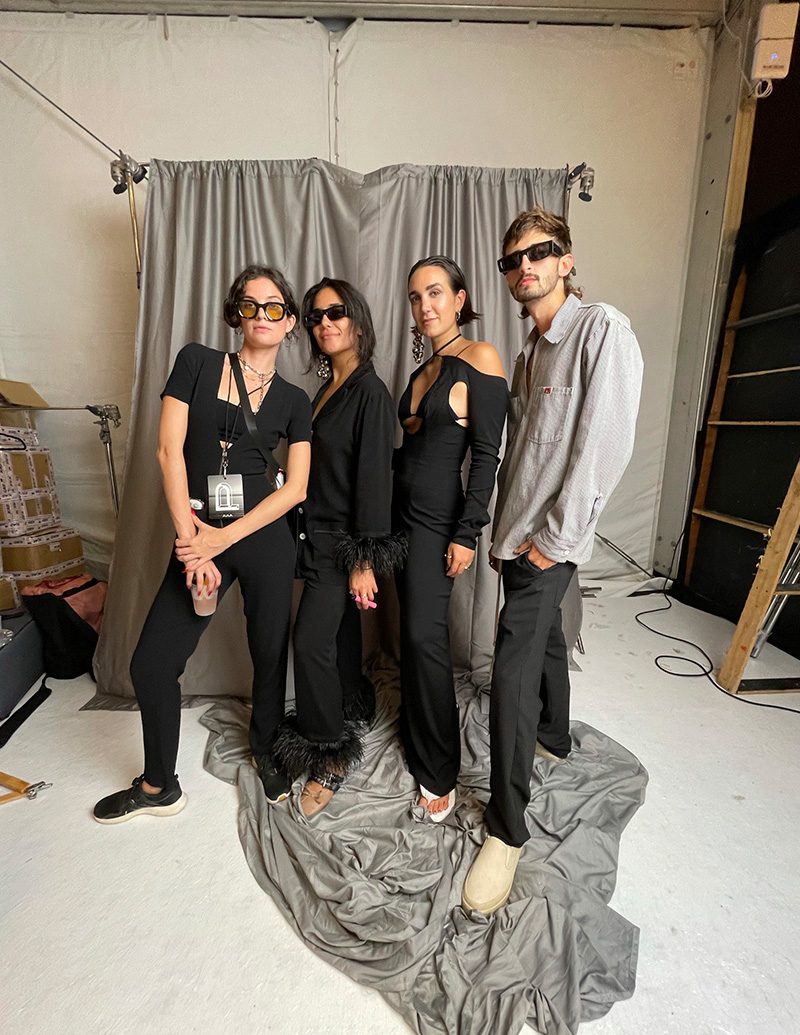

LATINNESS: You became a cult boutique.
SIMONETT: That’s right. That was what I was looking for. I wanted to get more involved with the community. It was something very important. I loved what I started doing. Of course, with the arrival of the pandemic, all of our accounts had canceled their orders, which pushed us to take the next step with Simonett. We changed the strategy from one hundred percent wholesale to direct-to-consumer. We had produced merchandise and all stores had closed their warehouses. Everything was super uncertain, so the only way to save ourselves was to sell directly to the consumer.
In 2020, we started selling the Spring-Summer collection and collaborating with influencers. We started in Miami. We did the “Simonett At Home” campaign and hired 30-40 people of interest in the city to send us a snapshot of their life in times of Covid using our pieces.
So Eliou, two jewelry designers from Miami, wore our clothes while they made their pieces, and a few female artists decided to paint their house. There was an influencer who did a photoshoot from home. The campaign was incredible. One of the pieces that emerged from the initiative was the Nanu Top, our most viral garment that year and still two years later. That top, along with two or three other styles, created a worldwide trend.


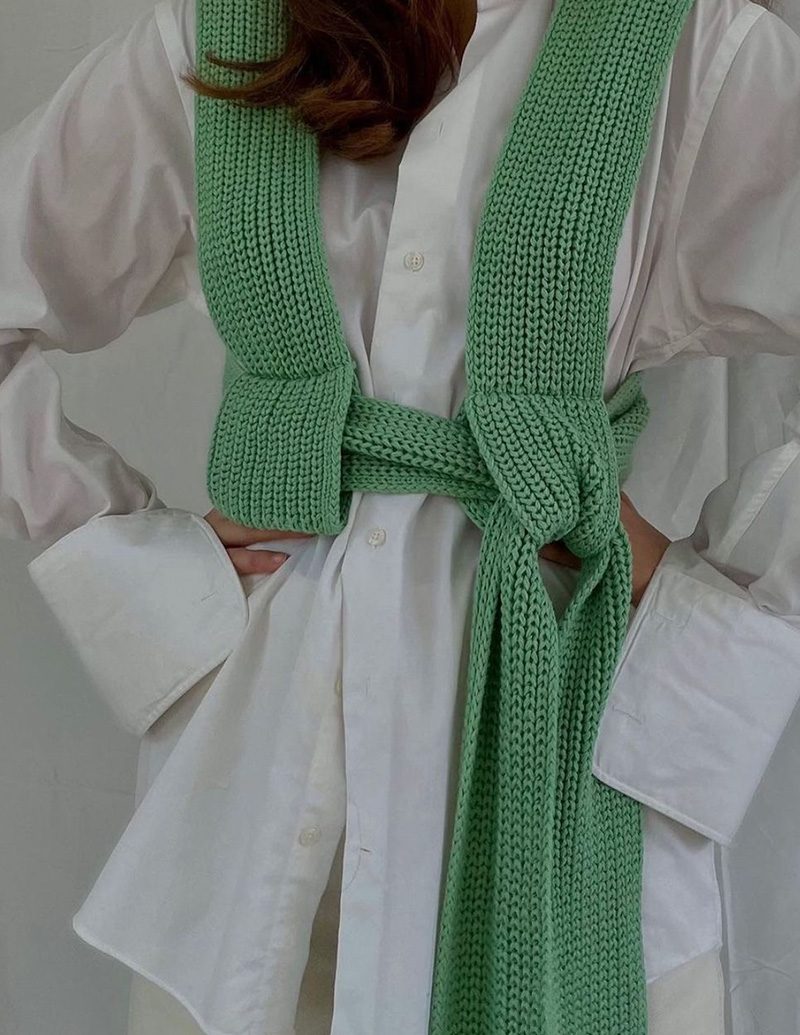
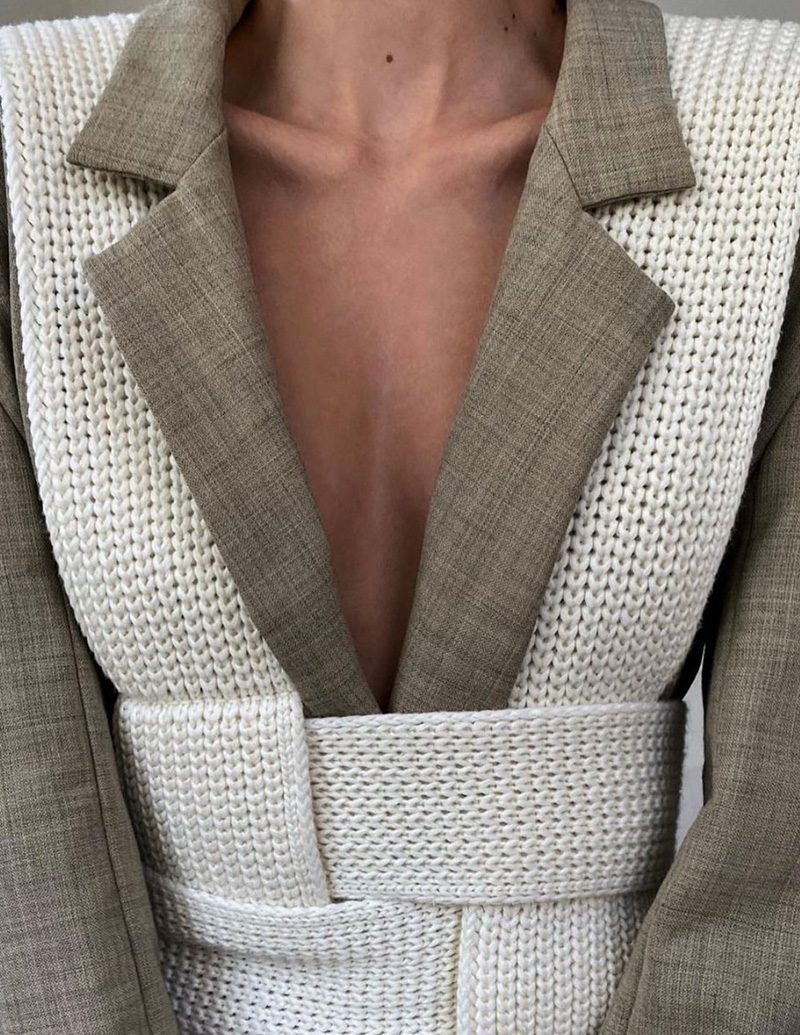
LATINNESS: Tell us more about the Nanu Top phenomenon. It’s been your hero piece…
SIMONETT: We created something that truly revolutionized all over the internet. We sent the shirt to Mo, a Venezuelan stylist. We designed it to be worn as a knit wrap top. It had a horizontal panel and two vertical ones, and straps to tie in the back.
Mo sent me a voice note saying: “Look, I don’t know what to do with the top. Is it like this?” Turns out she had worn it backwards, but it looked spectacular. I asked her to send me the photo. I’d been studying the market for ten years and seeing what people liked, but when I saw how she put it on I thought: “this is going to be a hit”.
When we posted the photo, it was crazy. It had more than ten thousand likes on our Instagram account and was re-shared like a hundred thousand times… a crazy, crazy, crazy thing that we had never seen.
We took the opportunity to start a challenge: show us how you wear your Nanu top. We were in the middle of the pandemic and people were bored at home. Of course, no one wanted to buy thousands of pieces of clothing with nowhere to go. It was the perfect storm. The garment was so versatile that you could wear a thousand ways and it also offered a fun element with which to interact with people over the internet. On TikTok it was crazy.
The Internet itself appropriated it and said: “we are going to do the Nanu challenge”. We obviously took full advantage– we did a lot of tutorials. It offered another lesson by giving me the confidence to know that I didn’t need retailers as much as I thought. We were able to develop creative strategies so that people would fall in love with our product.
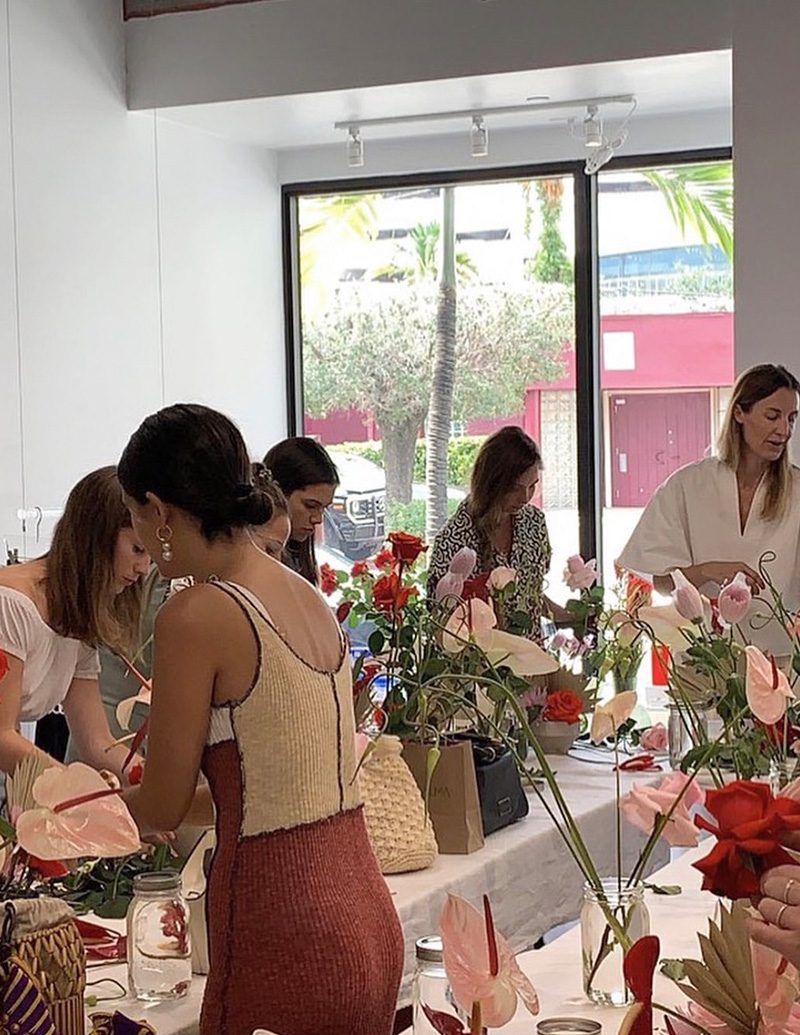
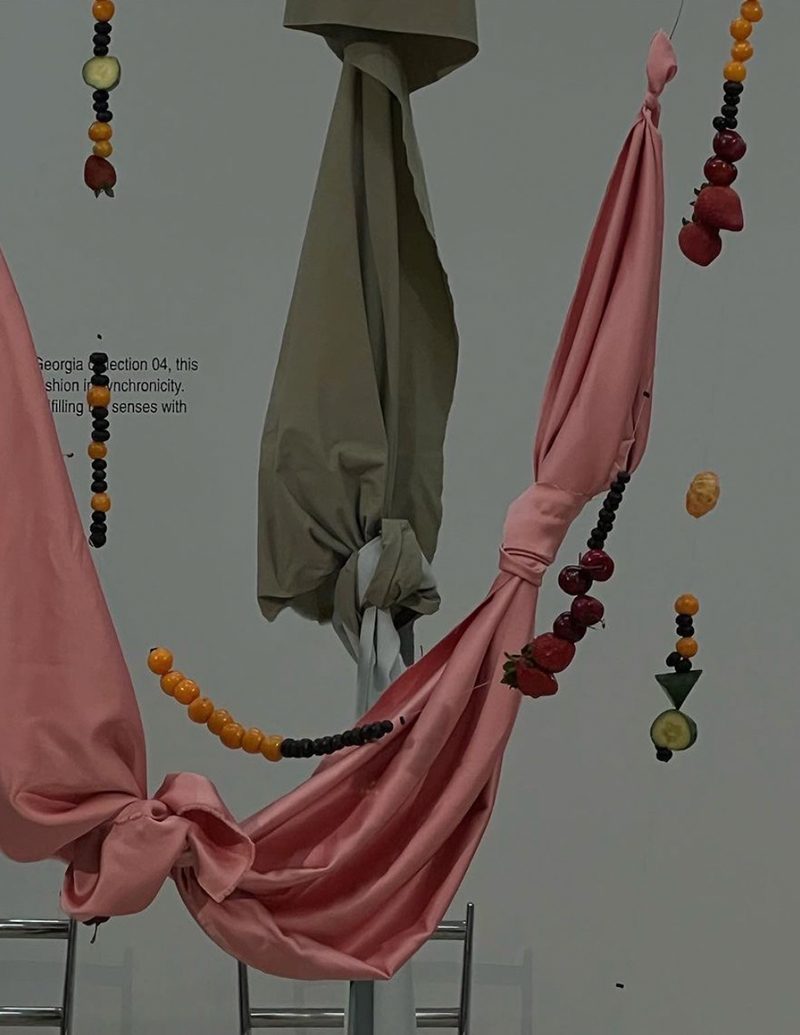
LATINNESS: So what’s Simonett’s current sales strategy?
SIMONETT: Since then we no longer sell wholesale; we have a few retailers, such as Intermix, and several accounts with which we feel there is a mutual benefit, but they don’t define the aesthetics or the pieces that are finally produced. Now it’s the other way around. Buyers ask us what style we think will be popular. We feel happy because we have much more control and we do what we really want.
We put out six to twelve styles a year, which is not much, but we’ve also been curating independent brands, something I fell in love with during the pandemic.
Discovering firms that don’t have a presence in Neiman Marcus or in large multi-brands, but are made by super-talented people who deserve to be showcased. Simonett has become a discovery platform where you can find amazing things.
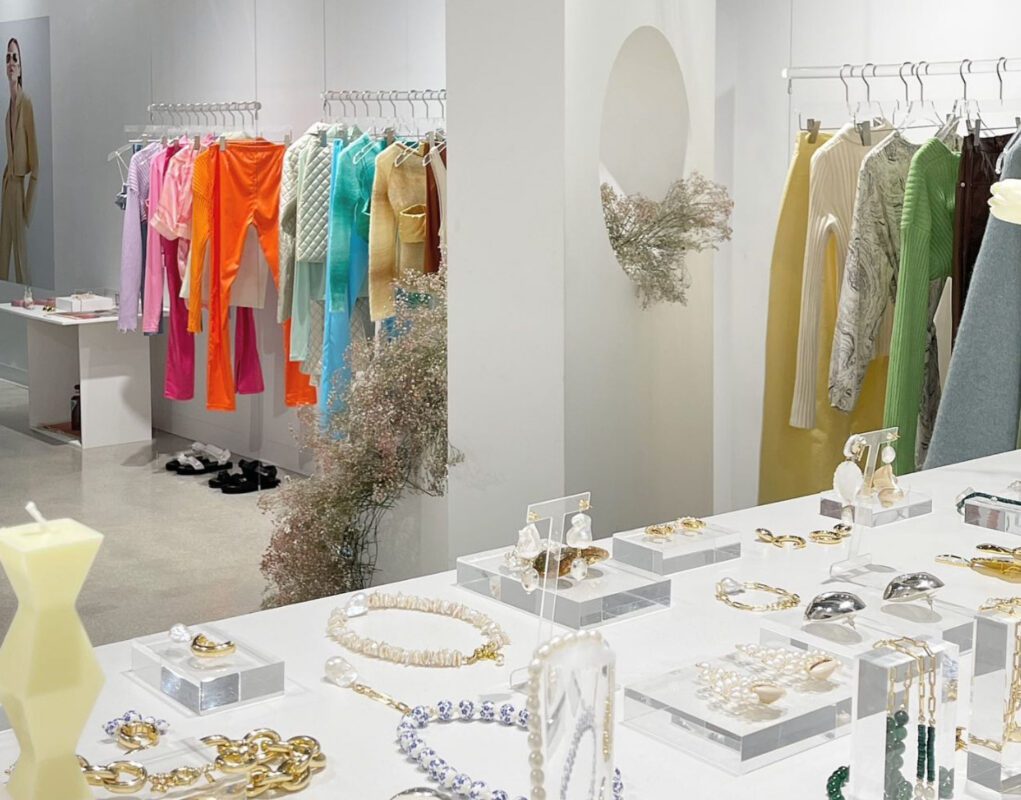
LATINNESS: I’m curious about something– You’ve always been at the cutting edge in your communications. How do you see the future of fashion regarding the metaverse?
SIMONETT: It’s the future, at least in terms of fashion. I feel that virtual reality is one of the most interesting channels for us, because it allows people to try on pieces digitally. Several applications have already come out that facilitate that for brands. It’s something we have in the pipeline,to install a feature on our page where people can measure the garments as if they were Instagram filters. We find it super interesting.
Also, collaborations with digital artists that transcend the limitations of physical design. For example, in real life, you can’t make pants that have a shining star, but digitally you can.
Something else that has nothing to do with the metaverse, but is also relevant is live shopping. We’ve done collaborations with an app called Shopshops, which is from China and has an HQ in New York. Today, it revolutionizes the world of digital shopping with a highly personalized strategy.
In our case, the next step would be live shopping, because you have a person 100% dedicated to showing you the pieces and answering your questions. “Where did they do that?”, “How does it look?”, “Show me the back”. It’s very one on one, the same experience you have in a store.
Obviously, if you walk into a store and try things on, the girl is like, “Look, I feel like this looks better on you.” Or “Look, I’ll tie you in the back.” There are many, many, many touch points of retail shopping that cannot exist online today, and I feel that live shopping is like merging these two experiences, while at the same time offering a more behind the scene look. That’s why TikTok and other applications are growing that don’t have that aspirational feel that Instagram has, which is a perfect picture moodboard.
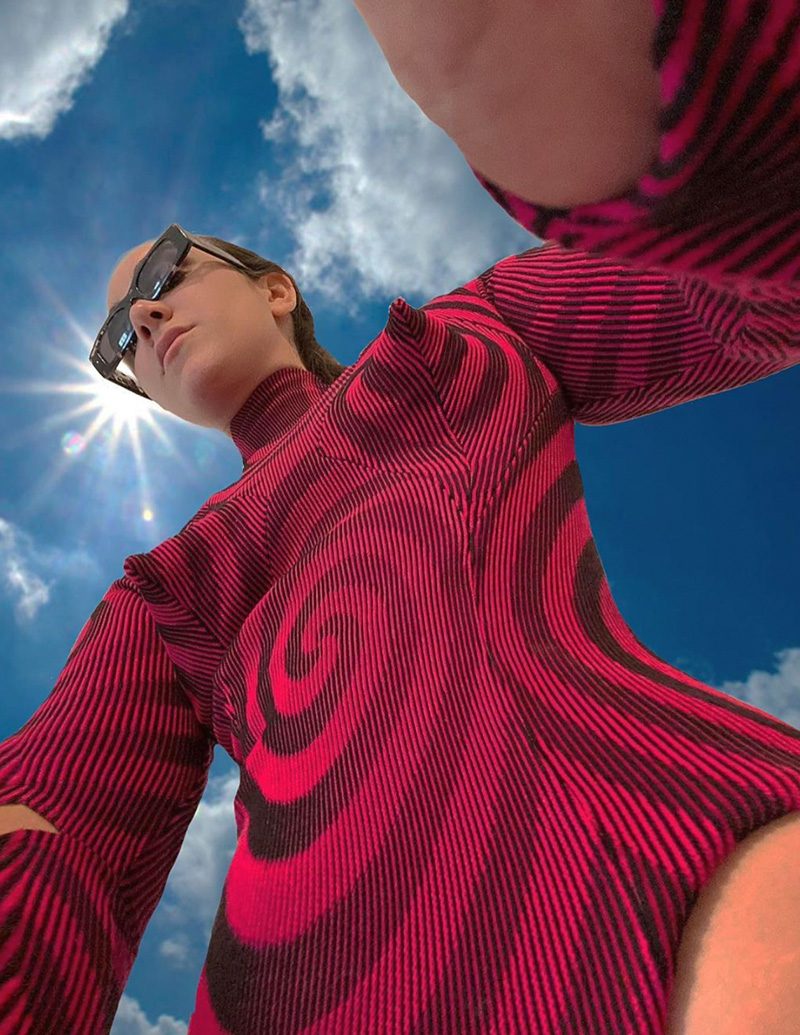
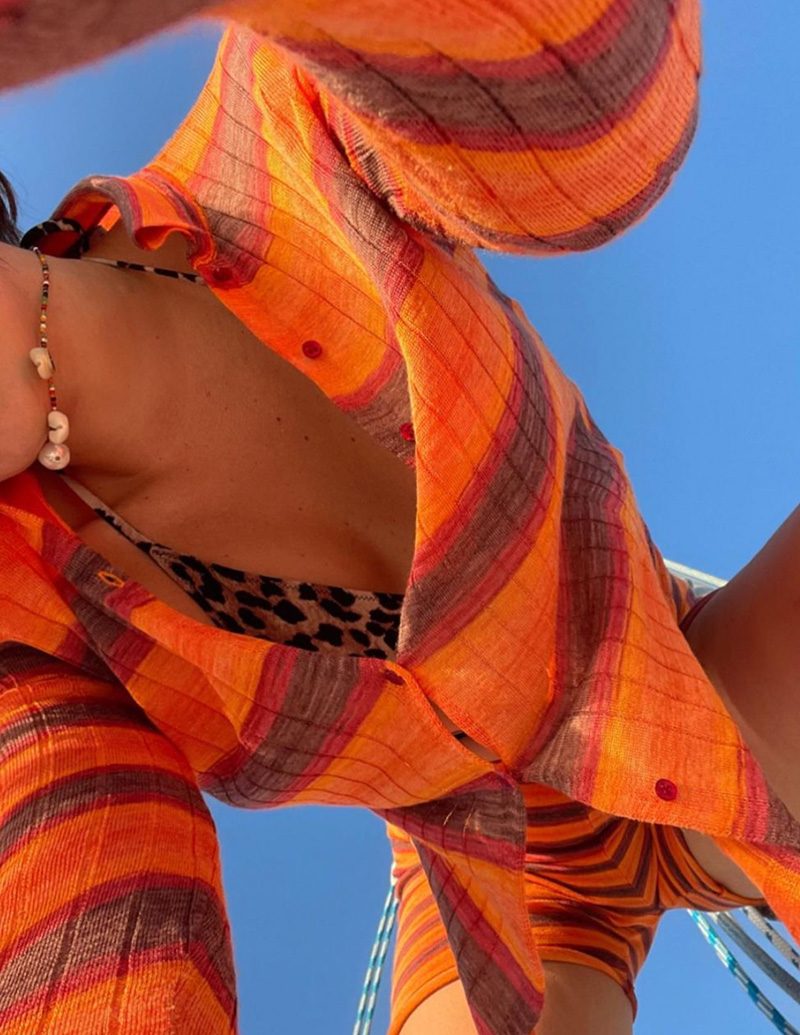
LATINNESS: So that’s the big bet?
SIMONETT: Yes. For the company it’s very important that people can see behind the scenes, as well as the final product. So live shopping and AR try-ons is what excites us most about that future– Where is fashion positioning itself? And well, it’s a bit scary because even though we grew up with the Internet, it’s another level. However, I find the ways in which creativity can be expressed under these new media interesting. You have to look to the positive aspect and lean on that.
LATINNESS: How do you envision the future of Simonett?
SIMONETT: The process has been super fun. Having learnt and developed in a way that everyone could see and also be a part of is very satisfying. Seeing as a consumer and as a creator is the way to create a brand and a community. This is how you get to the future.

